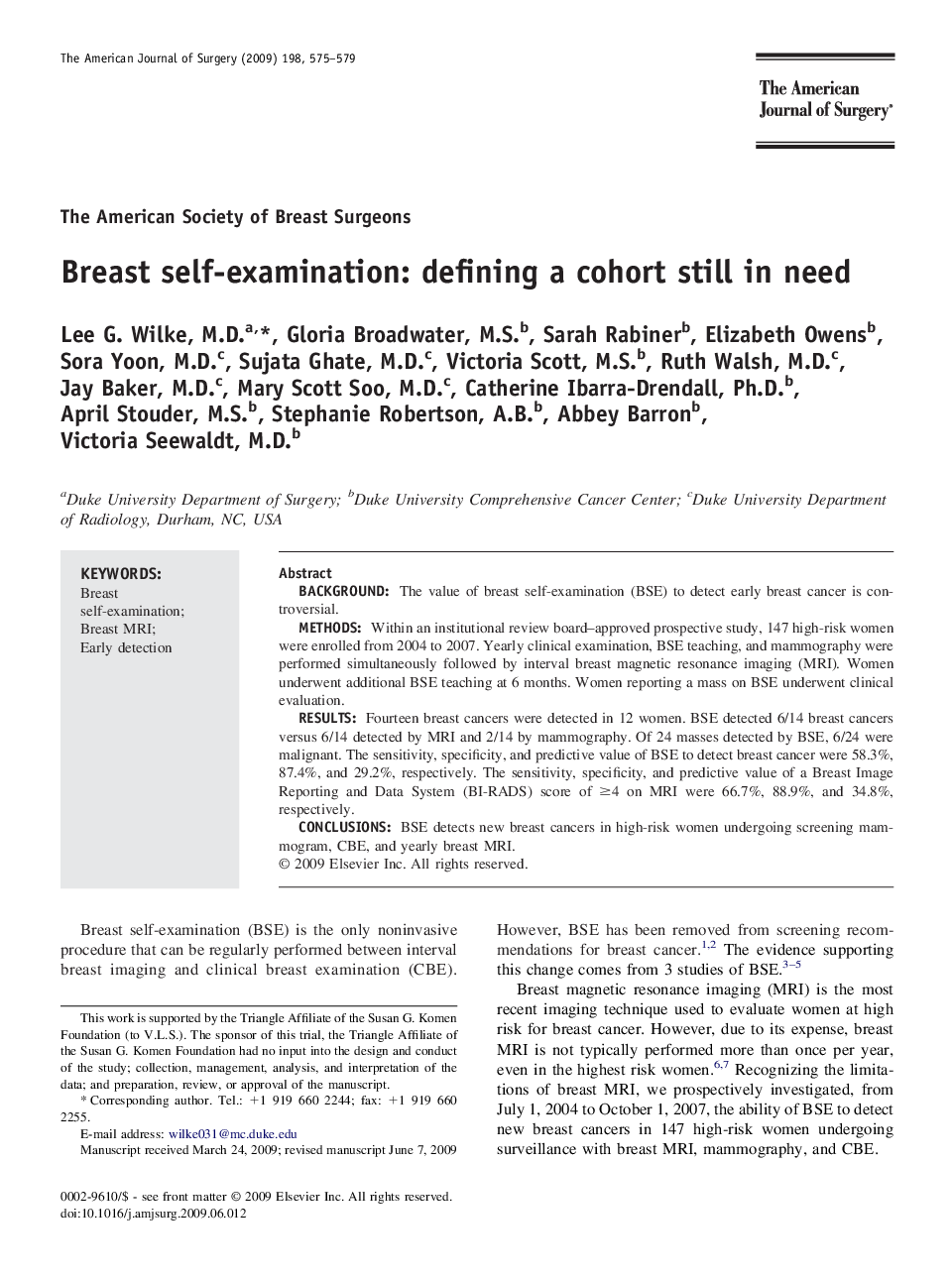| Article ID | Journal | Published Year | Pages | File Type |
|---|---|---|---|---|
| 4280802 | The American Journal of Surgery | 2009 | 5 Pages |
BackgroundThe value of breast self-examination (BSE) to detect early breast cancer is controversial.MethodsWithin an institutional review board–approved prospective study, 147 high-risk women were enrolled from 2004 to 2007. Yearly clinical examination, BSE teaching, and mammography were performed simultaneously followed by interval breast magnetic resonance imaging (MRI). Women underwent additional BSE teaching at 6 months. Women reporting a mass on BSE underwent clinical evaluation.ResultsFourteen breast cancers were detected in 12 women. BSE detected 6/14 breast cancers versus 6/14 detected by MRI and 2/14 by mammography. Of 24 masses detected by BSE, 6/24 were malignant. The sensitivity, specificity, and predictive value of BSE to detect breast cancer were 58.3%, 87.4%, and 29.2%, respectively. The sensitivity, specificity, and predictive value of a Breast Image Reporting and Data System (BI-RADS) score of ≥4 on MRI were 66.7%, 88.9%, and 34.8%, respectively.ConclusionsBSE detects new breast cancers in high-risk women undergoing screening mammogram, CBE, and yearly breast MRI.
